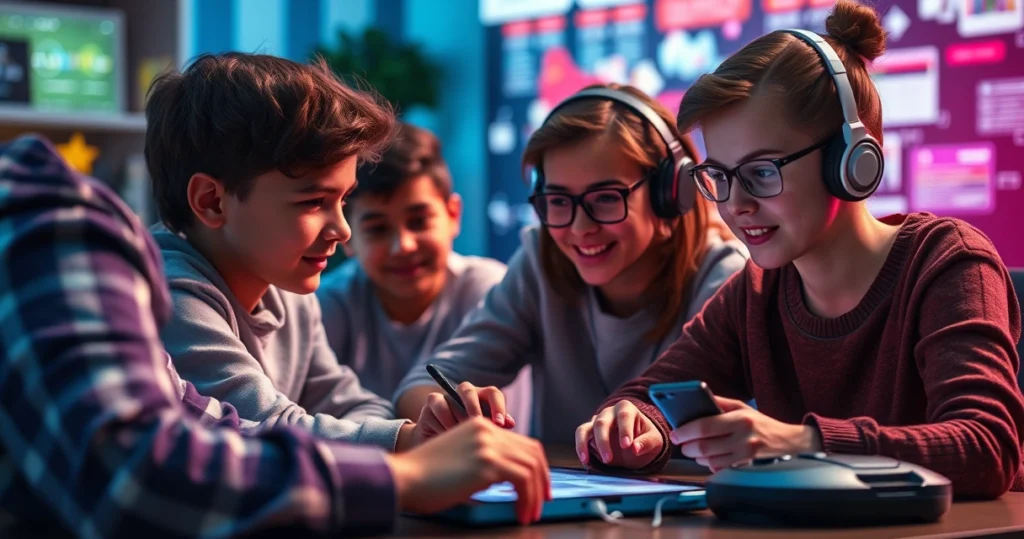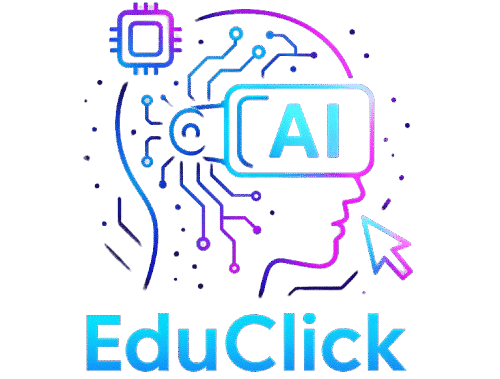Top 10 Future Learning Trends Transforming Education in 2025
Imagine a classroom where the boundary between the real and digital world blurs, where each student’s educational journey is tailored specifically to their needs, and where technology enhances rather than distracts. As you reflect on your own experiences with education, those long hours spent in traditional classrooms, you’re likely aware of the gaps and opportunities that were present. Perhaps you’ve even imagined how things could be different, more engaging, and more in tune with the fast-paced world we live in today.

In 2025, education is undergoing a transformative evolution, driven by technological advancements and a deeper understanding of how we learn. This isn’t just a story of gadgets and apps; it’s about a profound shift in how knowledge is imparted and absorbed. Remember the times when learning felt like a chore? These innovative teaching methods are redefining that experience, making education more interactive, personalized, and accessible to everyone.
Your curiosity, whether as a student, a parent, or an educator, fuels the very change we’re about to explore. You hold the power to leverage these future learning trends to reshape education, creating an environment where learning is not just effective but also deeply fulfilling. As we delve into these trends, imagine the possibilities they could unlock for you, your children, or your students. This journey to 2025 isn’t just about adapting; it’s about thriving in a world where education is no longer confined to four walls but is instead a limitless, borderless experience.
1. Personalized Learning Pathways
Understanding Personalized Learning
Personalized learning is rapidly gaining traction as a cornerstone of modern education. It tailors educational experiences to fit individual needs, preferences, and learning speeds. Imagine each student having a unique curriculum designed just for them, addressing their strengths and challenges.
Implementing AI in Personalized Learning
The integration of artificial intelligence (AI) plays a crucial role in this trend. AI algorithms analyze student data to provide insights into learning habits and preferences. This enables educators to craft personalized assignments and assessments that meet each student’s unique learning style.
Case Study: Success in Finnish Schools
- Finland’s education system has pioneered personalized learning.
- Teachers use AI to monitor student progress and adapt lessons accordingly.
- Students report higher engagement and improved outcomes.
Practical Applications for Educators
Educators can start by using available software that adapts to students’ learning speeds. Platforms like Khan Academy provide personalized learning paths for students in various subjects, enabling educators to implement this trend even without large-scale AI systems.
2. Gamification in Education
How Gamification Enhances Learning
Gamification introduces game-like elements to education, making learning more engaging and fun. This method taps into students’ intrinsic motivation, leading to better retention and enthusiasm.
Examples of Gamified Learning Tools
Tools like Kahoot! and Quizlet have transformed classrooms by turning quizzes and learning activities into interactive games. These platforms provide instant feedback and foster a competitive spirit among students.
Case Study: Improved Engagement in US Schools
- In a pilot program, several US schools integrated gamified lessons in their curricula.
- Results showed a 30% increase in student participation and attendance.
- Students exhibited a better understanding of complex topics through interactive learning.
Steps to Implement Gamification
To harness the power of gamification, educators can start small by introducing elements like point scoring, leaderboards, and rewards. Over time, these can be expanded to include more complex game-like scenarios tailored to curriculum goals.
🎥 Vídeo complementar sobre o tópico
3. Integration of Virtual and Augmented Reality
Exploring Virtual Reality in Classrooms
Virtual reality (VR) provides immersive experiences that can transport students to different times and places, enhancing their learning by providing context and a tangible sense of immersion.
The Role of Augmented Reality
Augmented reality (AR) enhances real-world environments with digital information. For example, through AR, biology students can explore the human body in 3D, making complex theories easier to understand.
Case Study: Virtual Labs in STEM Education
- Institutions like Stanford University offer virtual lab experiences for STEM students.
- These labs provide safe, repeatable, and cost-effective practice environments for students.
- Reported increase in student confidence and understanding of practical applications.
Practical Implementation Tips
To implement VR and AR in your educational environment, start with affordable solutions like Google Cardboard for VR experiences or AR applications available on tablets and smartphones. These can provide significant educational benefits without overwhelming budgets.
4. Collaborative Learning Environments
The Benefits of Collaborative Learning
Collaborative learning encourages students to work together, promoting communication, problem-solving, and critical thinking skills. It prepares them for real-world work environments where teamwork is crucial.
Technological Tools for Collaboration
Platforms like Google Classroom and Microsoft Teams facilitate collaborative projects by allowing students to work together in real-time, sharing ideas and resources seamlessly.
Case Study: Project-Based Learning in Canadian Schools
- Many Canadian schools have adopted project-based learning, emphasizing collaboration.
- Students report increased satisfaction and a deeper understanding of subjects.
- Teachers note improvements in student communication and problem-solving skills.
Actionable Steps for Educators
Educators looking to foster collaboration can begin by restructuring assignments to require group work and discussions. Encourage students to use digital collaboration tools for project management and communication to simulate real-world scenarios.
5. Lifelong Learning and Continuous Education
The Importance of Lifelong Learning
Lifelong learning emphasizes the continuous development of skills and knowledge beyond formal education. It prepares individuals to adapt to ever-changing job markets and technological advancements.
Utilizing Online Learning Platforms
Platforms like Coursera, Udemy, and edX offer courses across various fields, enabling individuals to learn at their own pace. These online resources are invaluable for those seeking to upskill or explore new areas of interest.
Case Study: Workforce Upskilling in Singapore
- Singapore’s government has invested heavily in lifelong learning initiatives.
- Citizens are encouraged to pursue courses that enhance their career prospects.
- Resulting in a more adaptable and skilled workforce, ready for future challenges.
How to Foster a Culture of Lifelong Learning
To cultivate a culture of lifelong learning, organizations and educational institutions can offer incentives for continued education, such as tuition reimbursement or access to online courses. Encouraging a growth mindset among students and employees alike fosters this trend.

What is personalized learning?
Personalized learning refers to an educational approach that tailors instruction to meet the individual needs, skills, and interests of each student. By leveraging technology and data, educators can create customized learning experiences that enhance student engagement and achievement.
How does gamification benefit education?
Gamification applies game design elements to non-game contexts, like education. It increases student motivation and engagement by making learning interactive and fun. Students are more likely to retain information and develop a positive attitude toward learning when it’s enjoyable.
Can VR and AR be used together in education?
Yes, VR and AR can complement each other to provide comprehensive educational experiences. While VR immerses students in entirely virtual worlds, AR overlays digital information on the real world, offering a layered understanding of complex topics.
What are some examples of collaborative learning tools?
Popular collaborative learning tools include Google Classroom, Microsoft Teams, and Slack. These platforms facilitate communication, resource sharing, and project management, enabling students and educators to work together effectively.
Why is lifelong learning important in 2025?
In 2025, rapid technological advancements and changing job markets require individuals to continuously update their skills. Lifelong learning ensures that people remain competitive and adaptable, capable of navigating new challenges and opportunities.
How can educators implement personalized learning?
Educators can implement personalized learning by using data analytics to understand students’ needs and leveraging technology like AI-driven educational platforms. Starting with available tools like adaptive learning software can help create a more tailored educational experience.
Are there any drawbacks to gamification in education?
While gamification can enhance motivation, it’s essential to balance game elements with educational goals. Overemphasizing competition can lead to stress or discourage students who don’t perform well in competitive environments. Properly designed gamification strategies can mitigate these issues.
What steps can I take to promote a culture of lifelong learning?
Promoting lifelong learning involves providing access to educational resources, encouraging curiosity, and rewarding continued education. Organizations can offer professional development opportunities and tuition assistance to foster an environment where learning is valued.
How do collaborative learning environments prepare students for the future?
Collaborative learning environments teach students essential skills for the workforce, such as teamwork, communication, and problem-solving. These skills are critical in professional settings, where collaboration is often necessary for success.
What resources are available for lifelong learning?
There are numerous resources for lifelong learning, including online course platforms like Coursera, edX, and LinkedIn Learning. Libraries, community colleges, and professional organizations also offer courses and workshops to help individuals continue learning throughout their lives.
Conclusion
As we look towards 2025, the landscape of education is poised for a profound transformation. These future learning trends—personalized pathways, gamification, VR and AR integration, collaborative environments, and lifelong learning—are not just buzzwords but are the building blocks of a new era in education. Each of these trends offers unique opportunities to make learning more engaging, effective, and inclusive.
Your role in this educational evolution is vital. Whether you are an educator, parent, or learner, embracing these trends can open doors to new possibilities and achievements. You have the power to shape how education adapts to meet the demands of tomorrow, ensuring that learning remains a joyful and rewarding journey for all involved.
Take action today by exploring these trends further, considering how you can incorporate them into your learning or teaching strategies. The future of education is not just something to anticipate; it’s something you can actively create and participate in. Let’s embrace this future together, making education a dynamic force for change and growth.
The journey to 2025 is exciting and filled with potential. By staying informed and proactive, you can ensure that you, your children, and your students are well-prepared to succeed in an increasingly complex world. The time to act is now—embrace these trends and transform the educational experience for the better.
Key Takeaways
- Personalized learning pathways offer tailored educational experiences through technology and data analysis.
- Gamification enhances student engagement by incorporating game-like elements into learning.
- Virtual and augmented reality provide immersive and interactive educational experiences.
- Collaborative learning environments prepare students for real-world teamwork and problem-solving.
- Lifelong learning is essential in an ever-evolving educational and professional landscape, enabling individuals to stay competitive and adaptable.




